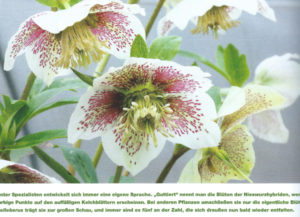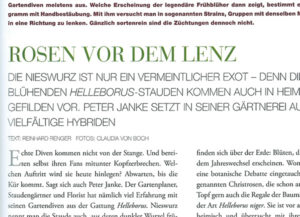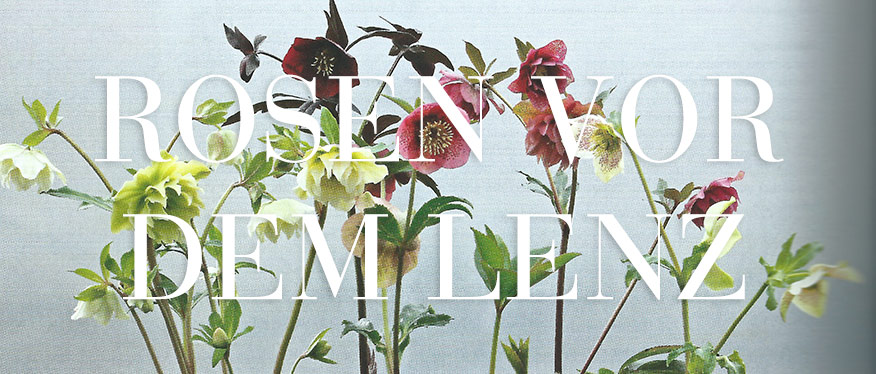Diverse and beautiful
The hellebore is only a supposedly exotic plant – because the early-flowering Helleborus shrubs can also be found in our native regions. Peter Janke relies on a variety of hybrids in his nursery.

Real divas don’t come off the peg. And sometimes even give their fans a headache. What performance will she make today? Wait until the freestyle comes. Peter Janke says the same thing. The garden planner, perennial gardener and florist has a lot of experience with his garden divas from the Helleborus genus. The perennial is also known as hellebore, and its dark root was once used to make sneezing powder. All parts also contain a cardiac poison related to aconite – which promoted the cultivation of hellebore as a medicinal plant even in ancient times beyond its aesthetic qualities. The latter are found above the ground: flowers that sometimes appear before the turn of the year. Which brings us to the middle of a botanical debate. The so-called Christmas roses, which often fill the shelves of DIY stores in pots at the end of the fall, belong to the species Helleborus niger. It is mainly native to the alpine region and surprises with its mostly snow-white flower stars long before anything else blooms. Legends have grown up around this supposed exotic that turns nature’s calendar upside down. It is said to bring good luck, and in the Middle Ages it was also regarded as protection against the plague.

“I am particularly fascinated by the Lenz roses with their variety of flower colors and shapes,” explains Janke, scion of a long-established gardening dynasty in Hilden near Düsseldorf. “They are garden perennials that are genetically mainly a hellebore species from Asia Minor, Helleborus orientalis.” In fact, his protégés have already diverged quite far from their wild ancestors through numerous mutations and now trade under the botanical name Helleborus x hybridus. And they can be a bit bitchy. Because a Helleborus generally does not like to be disturbed. “If you propagate them by dividing them in the laboratory, they often drop out after a short time and change their character,” explains the Rhinelander. So, in the best case, you have to sow in the traditional way and then you get a surprise: the children look different from their parents. Colors change, small dots of pigment can suddenly appear; the term “pure variety” is therefore of little use. That’s why you will search in vain in Peter Janke’s extensive range of perennials for the resounding cultivar names of the elegant Lenz roses, whose colors range from light green to yellow and white, pink and red to an almost black purple. “Botanists speak of strains instead, groups whose characteristics are very close to each other,” explains Peter Janke, whose love of plants began at an early age …
 Summary from “Living 01/2010”
Summary from “Living 01/2010”

